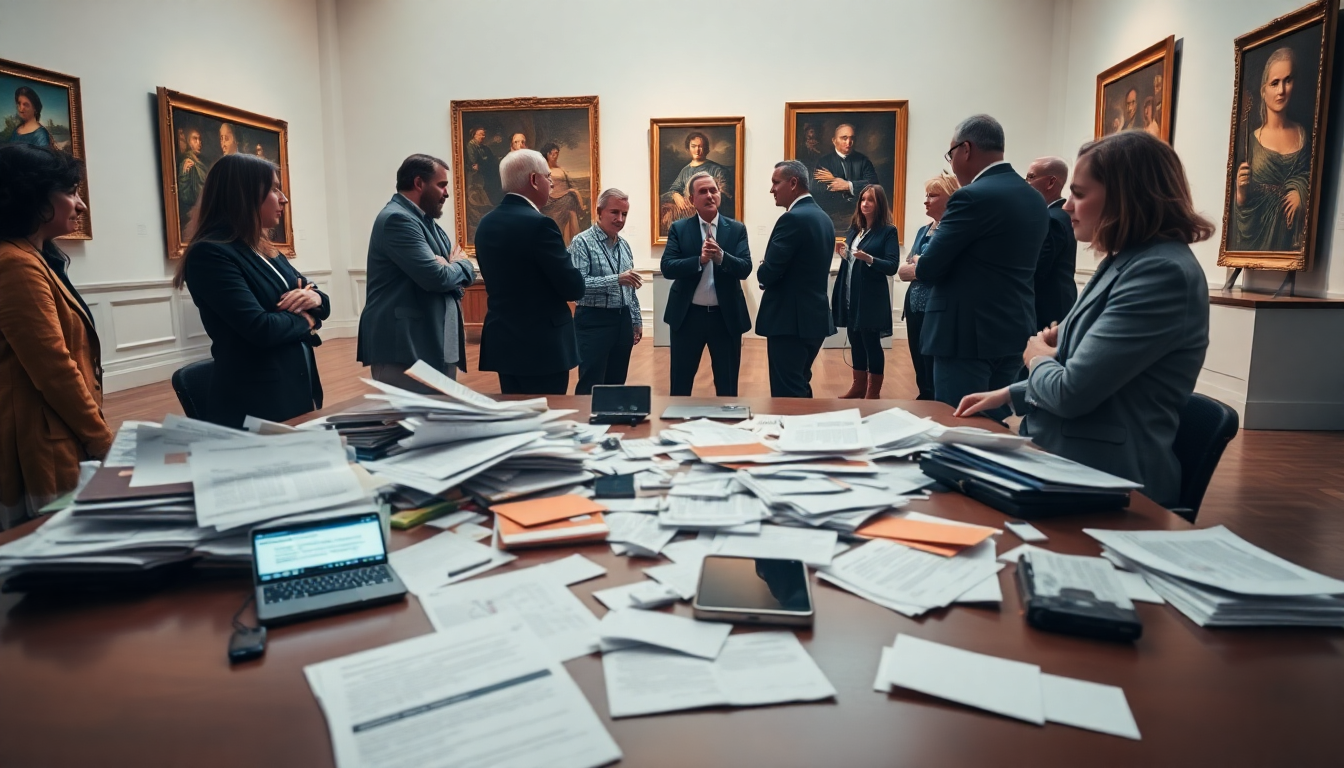Table of Contents
In a stunning twist that would leave any soap opera writer green with envy, Kim Sajet, the director of the National Portrait Gallery, has stepped down from her role. This dramatic exit comes barely two weeks after a certain ex-president decided to announce, via tweet, that he had ‘fired’ her.
Can you imagine a more chaotic situation? It’s like watching a train wreck in slow motion, and you can’t look away.
The museum world’s collective gasp
Leaders in the museum world were left reeling. Just days before Sajet’s resignation, the Smithsonian’s governing body had made it clear that only the secretary could hire or fire museum leaders.
So, what gives? Suddenly, it seems the ex-president’s whims have trumped established protocols. In an email to Smithsonian staff, Secretary Lonnie G. Bunch III expressed gratitude for Sajet’s twelve years of passionate leadership, emphasizing her contributions to expanding the gallery’s collection.
But let’s be honest: What’s the real story here? Did she really step down to protect the integrity of the institution, or was this just the last straw in a long history of political meddling? It’s hard to say.
Emotional farewells and hidden agendas
During a Zoom meeting attended by over fifty staff members, tears flowed as Sajet revealed her departure. The tension was palpable. According to an insider, she described her love for the institution and claimed her presence had become a ‘distraction.’ But come on, how many of you buy that? You don’t just walk away from a job you love because of a little political drama.
There’s always more beneath the surface, and in this case, it reeks of a power struggle.
The White House’s heavy hand
And then, the White House spokesperson chimed in, making it clear that the ex-president’s agenda was front and center.
On day one, he declared there was no room for ‘dangerous anti-American ideology.’ So, is this what we’re calling art these days? If you disagree with the administration, you’re suddenly anti-American? It’s a slippery slope, folks. Congress got involved, labeling the ex-president’s actions as unacceptable. But let’s be real: How many of you think that’ll actually change anything?
Speculation runs rampant
As Sajet’s standoff with the White House played out, museum leaders were left speculating about the long-term independence of the Smithsonian. David Ross, a prominent figure in the art world, expressed concern that this resignation would only serve as another notch on the ex-president’s belt. It’s a troubling thought, isn’t it? The idea that our cultural institutions could be puppets, dancing to the tune of political whims. And let’s not forget Lynda Lanker, who’s pondering the fate of her late husband’s contributions to the gallery, worrying they might fall victim to the administration’s anti-Diversity, Equity, and Inclusion (DEI) stance. It’s like watching a dystopian novel unfold right before our eyes.
A legacy tarnished?
When Sajet took the reins in 2013, she became the first woman to lead the National Portrait Gallery. Talk about breaking glass ceilings! She pushed for innovation, and her departure raises serious questions about the future of artistic expression within the Smithsonian. Will the next director be willing to take risks, or will they dance to the tune of political correctness? Sajet once said, “Nothing is a sacred cow.” But now, it seems like the sacred cows are being slaughtered.
The final act
With the Smithsonian Board of Regents meeting behind closed doors, discussing ‘confidential personnel matters,’ it’s safe to say the atmosphere is tense. The board reaffirmed its support for Secretary Bunch, urging him to communicate specific expectations to museum directors. But let’s face it; this is just a band-aid on a gaping wound. When the political powers that be start dictating what can and cannot be displayed, we’re headed down a dangerous path.
As the dust settles, one can’t help but wonder about the implications of this resignation. Is it a victory for the ex-president, or a harbinger of doom for artistic freedom? The theater of the absurd continues, and it’s anyone’s guess how this will all play out. So, what’s next for the National Portrait Gallery? Will it continue to fight for its identity, or will it succumb to the pressures of political correctness? Stay tuned, because this drama is far from over.





